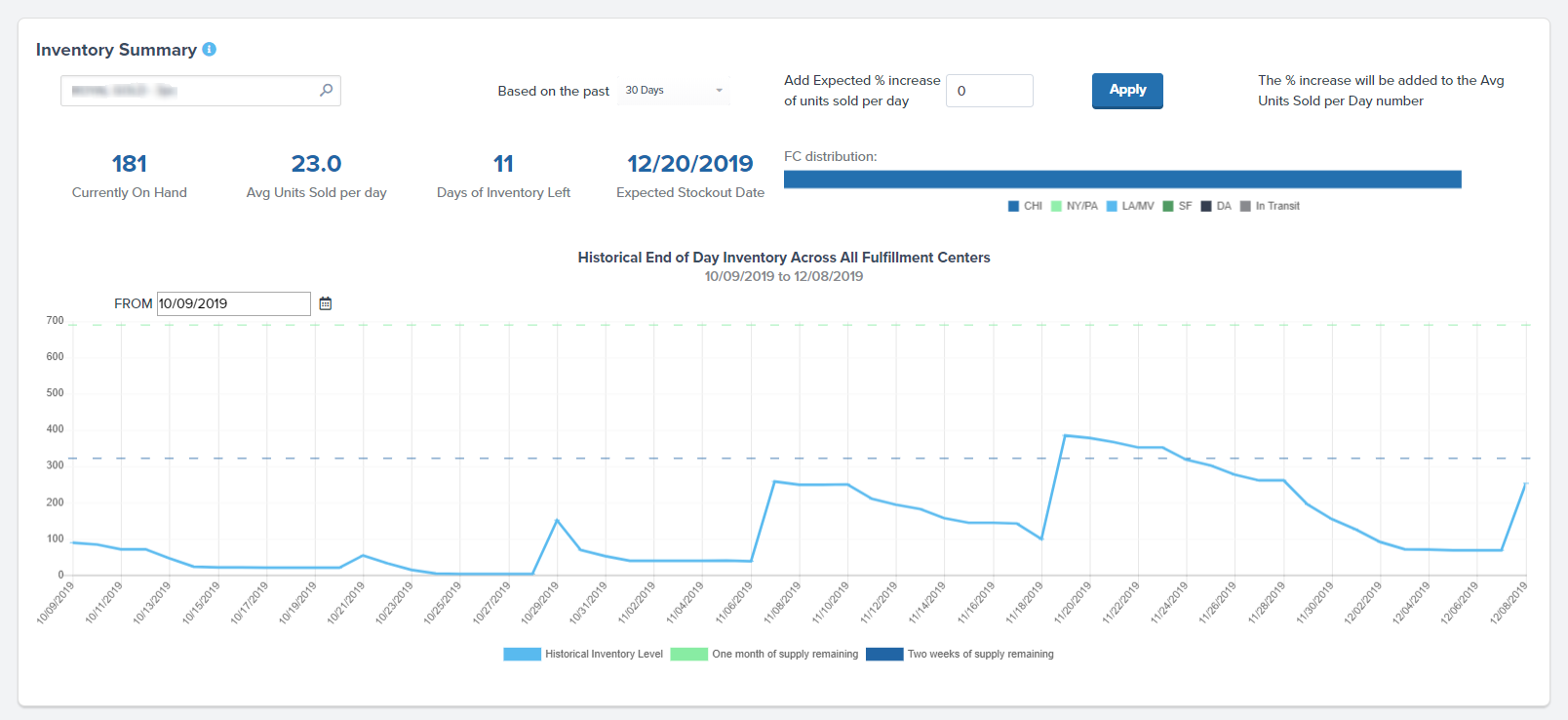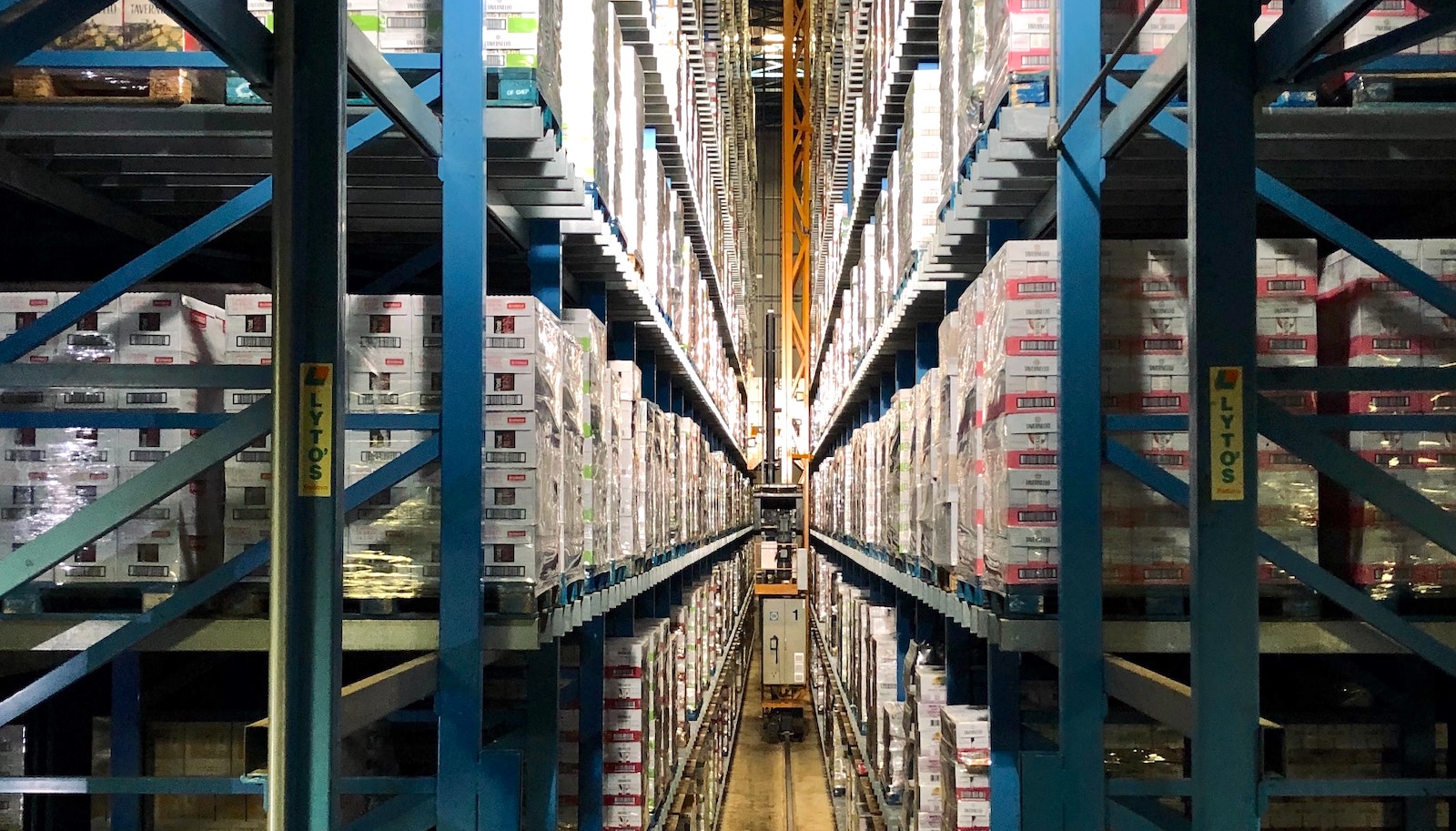Table of Contents
** Minutes
Why is inventory planning important for ecommerce?
What are the benefits of inventory planning?
What are the challenges of inventory planning?
Inventory planning methods to implement
“By failing to prepare, you are preparing to fail.”
The same notion holds true when it comes to running an online store.
Behind every successful ecommerce business, there is a lot of strategic supply chain planning involved — especially when it comes to inventory.
In ecommerce, inventory is your biggest asset. Without proper inventory planning, it can result in some serious business repercussions, ranging from increased logistics costs to major stockouts, to delays in shipping orders.
When done right, inventory planning helps online stores reduce costs, save time, and streamline their ecommerce supply chain. That way, customer expectations are consistently met and businesses can stay profitable.
Learn the ins and outs of inventory planning, including common inventory management challenges and how the right tools, technology, and data can help make planning much easier.
What is inventory planning?
Inventory planning is the process of optimizing inventory levels to meet demand and optimize internal costs.
An important part of supply chain management, inventory planning ensures your supply chain runs smoothly. It involves several processes and tasks, including inventory forecasting, storage optimization, inventory tracking, and more.
Why is inventory planning important for ecommerce?
When you first start your business, you might be able to fulfill orders from home and manage ecommerce inventory without putting much time or thought into inventory planning.
But as your business grows, the more inventory you will have to order, manage, replenish, store, and prepare to sell.
Since inventory levels change constantly throughout the supply chain, it can be a challenge to maintain an optimal amount of inventory to meet demand, especially since demand continuously fluctuates.
But taking the time to plan, you can make better judgment calls on how much inventory on hand you should have, when to reorder more inventory, and how long inventory takes to receive and prepare for fulfillment.
Lastly, inventory planning not only minimizes overall costs, but it ensures you can deliver a great customer experience. It can help to avoid out-of-stock issues and delays in fulfillment, so items ordered can be picked, packed, and shipped as soon as possible.
What are the benefits of inventory planning?
There are many benefits to inventory planning, but at the crux of it all, it’s about attaining stock control and making the right inventory decisions to meet demand and remain profitable. Below are the top benefits of inventory planning.
1. Provides better cash flow
Your total inventory costs, which includes money spent on holding and storing inventory, is a huge expense for retail businesses. It can collectively amount to about 20% to 30% of your total inventory expenses.
Inventory planning enables you to use inventory financing more judiciously. For example, when you order just enough stock to meet future demand, you avoid overstocking, so too much capital isn’t tied up in inventory.
Inventory planning also ensures that inventory accounting will go smoother during tax season, and it definitely makes pulling accurate inventory reports much easier. Ultimately, inventory planning enables you to make better decisions, so you can grow your business faster.
“We utilize ShipBob’s Inventory API, which allows us to programmatically retrieve real-time data on how many units of each product are currently stored at ShipBob’s warehouses.
We currently use this API to generate custom reports to tie this inventory data into our accounting platforms.”
2. Improves demand forecasting
Demand forecasting helps make better-informed supply decisions that estimate the total sales and revenue for a future period of time.
It not only helps you meet customer demand, but it also helps you make better financial decisions that impact profit margins, cash flow, inventory allocation, warehousing, staffing, and overall logistics spend.
3. Better storage system
Storing your inventory takes not only well-thought out planning but constant improvement.
If you have clear-cut, goal-driven plans for your inventory, you will be able to choose an inventory storage system that works best for your team, depending on how much space you have, the size of your products, the number of SKUs you have, the total units you carry, and more.
You can also plan the layout and design of the warehouse space, so that warehousing becomes a lot more efficient. Known as warehouse slotting, taking the time to organize your warehouse can help maximize your space and speed up fulfillment without compromising order accuracy.
If you think your warehouse is full, slotting can help identify ways to increase storage complicity.
On the other hand, you can set your warehouse picking team up for success by storing products in a way that make the most sense to them, such as by type, size, or weight, or by productivity (i.e., storing your best-sellers or most common order combinations together). This enables your team to focus on efficiency rather than spending too much time locating the right item.
“It’s a pain to pick, pack, and print the labels, and manage inventory storage. It would be a huge stress for us to do it ourselves, but the fact that ShipBob takes care of it all, both the savings in costs and time, is invaluable to our business.”
Nikolai Paloni, Co-Founder of Ombraz Sunglasses
What are the challenges of inventory planning?
While the benefits of strong inventory planning are undeniable, retailers also tend to face quite a few roadblocks when it comes to adopting planning best practices for their business.
Here are some of the challenges that many online brands face when it comes to inventory control.
1. Unreliable data
For a smooth and lean supply chain process, you need access to real-time data. But many times, the data is not tracked diligently, especially if it’s tracked manually.
Even when kept tabs on, it is dispersed across many disparate systems. This makes it difficult for retailers to piece all the data together to gain a complete picture of the inventory.
In the absence of a cohesive view of historic and/or current inventory levels and any other important sales information, you will find yourself floundering in the dark when it comes to making inventory-led decisions. This is why implementing a centralized, real-time inventory tracking system is non-negotiable.
Implementing a way to track inventory in real time ensures you have accurate data, even as you expand into new sales channels and grow your distribution network. There are several inventory apps to choose from that make it easy for online brands to better track inventory.
But instead of investing in your own inventory tracking software, you can save time and money by partnering with third-party logistics (3PL) provider like ShipBob.
ShipBob not only stores your inventory in the domestic and/or international fulfillment locations of your choice, but you also get access to inventory data from a single dashboard.
That way, you can save time and effort on updating several spreadsheets and reduce human error (and even take time-consuming inventory tasks off your team’s plate completely).
“I used to have to pull inventory numbers from three places everyday and move all the disparate data into a spreadsheet. ShipBob has an analytics tab in their dashboard with all of this information, which is great for end-of-month reconciliations. It’s really nice to not have to operate three 3PLs.”
Wes Brown, Head of Operations at Black Claw LLC
2. Lack of automation
Customers have high expectations on how quickly orders are fulfilled and shipped. But being in the weeds of planning and managing inventory can impact supply chain efficiency.
It’s not uncommon for online brands to implement inventory automation to automate inventory-related tasks that are often time-consuming and prone to human error, such as mispicks and inventory shrinkage, when inventory is managed manually.
No wonder more and more modern retailers are using automated software to enable an efficient inventory management process. Automation can remove time-consuming manual work while improving inventory accuracy.
3. Lack of internal training
Without proper staff training, your warehouse processes will likely fail or slow down.
For your employees to really add value to inventory planning, you need to empower them with knowledge of the latest processes, data and analytics, distribution metrics, and technologies involved in supply chain management.
But investing in training and implementing technology can be costly, not to mention time-consuming. Though many online brands have team members that look over logistics planning, it’s not uncommon for online brands at all different stages of growth to partner with a 3PL that provides the technology, data, and expertise needed to plan and manage inventory effectively.
Inventory planning methods to implement
There is no one-size-fits-all method for inventory planning, but there are several methods to choose from, which all have their advantages and disadvantages.
Here are the top inventory planning methods used by fast-growing online brands.
1. Economic order quantity (EOQ) model
If you believe in running a lean warehouse, the economic order quantity (EOQ) model works well.
It involves a calculation that finds the optimal order quantity to minimize logistics costs and optimize storage space.
To calculate EOQ economic order quantity (EOQ) formula, you will need access to three variables: holding costs (i.e., total cost of holding inventory), annual demand, and order cost. From there, you can use the following calculation:
EOQ = square root of: [2(order costs)(demand rate)] / holding costs
2. Minimum order quantity (MOQ) model
Minimum order quantity (MOQ) represents the least number of units that a buyer needs to purchase in every order.
Many suppliers set an MOQ to make inventory orders worthwhile to fulfill. Cheaper inventory items tend to have higher MOQ, and vice versa. If your business needs less stock than the supplier’s MOQ, then you might need to look for an alternate supplier.
Though this method is typically used by manufactures and suppliers (including some packaging vendors), online brands have reasons to use it as well. For instance, online brand might have MOQ if they fulfill B2B orders. Having an MOQ in place for B2B customer can incentive a higher order spend.
It can also be used to determine a minimum spend threshold for all customers that will offset the costs of offering free shipping. That way, customers are incentivized to spend more.
3. FIFO & LIFO model
The first in, first out (FIFO) model is a type of inventory valuation method that has one simple rule: goods from the batch that came into the warehouse first are what will be sold first. This framework is especially useful when you are selling perishable inventory items such as products with expiration dates.
Even if your goods are shelf-stable, FIFO is still a useful model. It’s important to change out inventory so you don’t end up carrying inventory that becomes unsellable or obsolete (known as deadstock) like if you change your logo or packaging.
Additionally, it delivers a higher net income in an inflationary market and a better measure of ending inventory value.
“We also have easy ways to manage subscription orders as well as expiration dates and lot numbers, so inventory goes in First In, First Out (FIFO).”
Leonie Lynch, Founder & CEO of Juspy
On the other hand, with the last in, last out (LIFO) model, goods from the batch that comes in last are shipped out first. When prices of goods are rising, this accounting method offers some tax advantages.
4. Reorder point formula
Are you always struggling to figure out when, how frequently, and which inventory to reorder? SKU management is challenging, especially if your product catalog is on the large size.
To ensure you restock inventory on time to meet demand, the reorder point formula is a great tool. Reorder points ensure that you don’t fall behind on your next batch of inventory.
With an accurate reorder point for each SKU, you’ll always have enough stock on hand to satisfy customer demand. Since every SKU will perform differently, it can help you decide how frequently to restock certain items based on past sales trends.
To calculate reorder points for each SKU, you will need to know:
- How long it takes to receive inventory from your supplier
- Warehouse receiving time
- How much safety stock makes sense to have on hand
With this information, you can use the following formula to calculate your reorder point:
Reorder point (ROP) = demand during lead time + safety stock
Knowing when to reorder inventory is the best way to keep stockout costs and backorders at a minimum.
Inventory management planning with ShipBob (in 3 steps)
Inventory planning is critical to keeping up with your business’s financial wellbeing, as well as ensuring you meet customer expectations.
But it’s also a time-consuming process, and as a business owner, your time is better spent on other initiatives. Even if you have a team to support you, there are other tasks that might be more worthwhile such as improving customer service, managing distribution growth, or even product development.
By partnering with ShipBob, you can spend less time on logistics operations, including inventory planning and management.
ShipBob not only offers a robust robust international fulfillment service network but also best-in-class technology and full visibility into your supply chain.
With ShipBob, you can put inventory optimizationon autopilot. Here’s how it works.
Step 1: Integrate your ecommerce platform with our native inventory management system
Working with a 3PL like ShipBob means that you can integrate your ecommerce platform(s) with our technology, which includes built-in inventory management software.
By connecting your store with ShipBob’s 3PL software, you can track inventory in real time across multiple distribution centers and sales channels.
Whether you store inventory in one ShipBob location or multiple, you can view inventory levels all from the ShipBob dashboard.
“With ShipBob, we have access to live inventory management, knowing exactly how many units we have in each fulfillment center. This not only helps with our overall process in managing and making sure our inventory levels are balanced but also for tax purposes at the end of the year.”
Matt Dryfhout, Founder & CEO of BAKblade
Step 2: Start shipping and gain access to your own data dashboard
For better inventory planning, you need 100% inventory visibility. ShipBob’s easy-to-use dashboard of real-time data offers just that.
You can use the ShipBob dashboard to automatically track your inventory at all stages of the supply chain, including which inventory items are waiting to be received and how much you’ve sold in a given period of time.
ShipBob’s powerful data and analytics reporting tool provides a deep dive into inventory insights, from product allocation to storage costs, to inventory turnover rate, days sales in inventory, and SKU velocity.
Additionally, you can set automatic reorder point notifications, identify inventory trends, plan future promotions, and much more.
“ShipBob’s analytics tool is really cool. It helps us a lot with planning inventory reorders, seeing when SKUs are going to run out, and we can even set up email notifications so that we’re alerted when a SKU has less than a certain quantity left. There is a lot of value in their technology.”
Oded Harth, CEO & Co-Founder of MDacne

Step 3: Forecast inventory demand and optimize fulfillment
Inventory forecasting is made much easier with the right data at your fingertips. ShipBob allows you to expand your supply chain and aggregate historical inventory data all in one place.
With ShipBob, you’re given access to inventory data and trends, so you can plan how much to reorder of each SKU, when, and where to store it. Get answers to questions like:
- What were my historical stock levels at any point in time in any location?
- How many days do I have left until a SKU will be out of stock?
- How often is each product sold across channels?
- If I run a flash sale on my site, how will this affect my available inventory levels?
- How are my sales affected by different seasons and months?
- What are my best-selling items?
Conclusion
A retail business that executes intelligent inventory decisions, much in advance, is surely on the path to success. The only issue is it involves managing a lot of moving pieces while keeping a close eye on the data and past inventory trends.
To help you spend less on inventory planning, ShipBob can help. From inventory forecasting to tracking inventory in real time, ShipBob provides the tools, expertise, and support needed to help you make better business decisions, so you can grow your business faster.
Thanks to our best-in-class proprietary technology, you can outsource fulfillment to ShipBob and still maintain control and visibility over your supply chain.
“So many 3PLs have either bad or no front-facing software, making it impossible to keep track of what’s leaving or entering the warehouse.
On the supply chain side, I just throw in what we placed at the factory into a WRO in the ShipBob dashboard, and I can see how many units we have on-hand, what’s incoming, what’s at docks, and so on. I can see all of those numbers in a few seconds, and it makes life so much easier.”
Harley Abrams, Operations Manager of SuperSpeed Golf, LLC
Start a conversation with ShipBob today to learn more about our premium fulfillment solutions.
Inventory planning FAQs
Here are the top questions about inventory planning.
What are the different methods of inventory planning?
There are several different methods, and the type of method you choose depends on how much inventory you store, what you sell, and how you want to track inventory. Here are a few common methods in ecommerce: economic order quantity; minimum order quantity; first in, first out; and last in, last out.
How does inventory planning work with a 3PL?
Inventory planning requires tools and technology that provide full visibility into inventory levels, trends, and historical data. Without access to data, it can be hard to make strategic business decisions to forecast demand, plan future promotions, and optimize inventory based on how much demand there is and where. Many online brands implement inventory management software to help track inventory in real time and aggregate data. If you partner with a tech-enabled 3PL, they should provide the data and analytics you need for inventory planning so they don’t run out of your inventory to fulfill orders through use of built-in tools like reorder point notifications and other analytics.
Why is inventory planning important?
Since inventory levels change with every order places and there are other variables of impact throughout the supply chain, it can be a challenge to maintain an optimal amount of inventory to meet demand, especially since demand continuously fluctuates. But taking the time to plan inventory to meet demand and optimize cost, you can make better judgment calls on how much inventory on hand you should have, when to reorder more, and how long inventory takes to receive and prepare for fulfillment. Overall, inventory planning not only minimizes overall costs, but it ensures you can deliver a great customer experience.
What is the EOQ model?
The economic order quantity (EOQ) model is a calculation designed to find the optimal order quantity for businesses to minimize logistics costs, optimize storage space, and avoid stockout. Te formula is: EOQ = square root of: [2(setup costs)(demand rate)] / holding costs.



